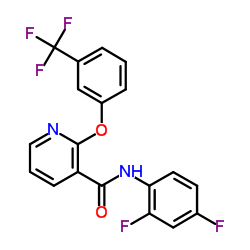Aquatic toxicity tests with substances that are poorly soluble in water and consequences for environmental risk assessment.
Gabriel S Weyman, Hans Rufli, Lennart Weltje, Edward R Salinas, Marc Hamitou
Index: Environ. Toxicol. Chem. 31(7) , 1662-9, (2012)
Full Text: HTML
Abstract
Aquatic toxicity tests with substances that are poorly soluble in water have been conducted using different methods, and estimates of toxicity have varied accordingly. The present study illustrates differences in toxicity values resulting from variation in test designs and solution preparation methods, and offers guidance on the best way to conduct these tests. Consequences for environmental risk assessment and classification are also discussed. The present study mainly considers active ingredients of plant protection products, but is also considered relevant to other chemicals. It is recommended that toxicity tests be conducted only up to the saturation limit, dispersants avoided, and solvents used only if necessary to support handling and speed of dissolution. Analytical measurements of exposure concentrations should reflect what organisms are exposed to. If acute toxicity testing at the saturation limit yields no adverse effects, further testing should not normally be required; the toxicity value of the endpoints should be considered as the saturation limit and adverse classification should not be required. Chronic testing, if required, should then be conducted at the practical saturation limit as this is the most realistic worst-case exposure scenario. If no adverse effects occur, the risk should be acceptable because higher aqueous exposure cannot occur. This could be substantiated by testing additional species. Assessment factors on no observed effect concentration (NOEC) values at the saturation limit require careful consideration in the risk assessment to avoid unnecessarily low regulatory acceptable concentrations.Copyright © 2012 SETAC.
Related Compounds
| Structure | Name/CAS No. | Molecular Formula | Articles |
|---|---|---|---|
 |
diflufenican
CAS:83164-33-4 |
C19H11F5N2O2 |
|
Multiresidue method for the determination of 13 pesticides i...
2011-09-15 [Talanta 85(3) , 1500-7, (2011)] |
|
Single drop microextraction and gas chromatography-mass spec...
2013-12-01 [Environ. Monit. Assess. 185(12) , 10225-33, (2013)] |
|
Rainfastness and adsorption of herbicides on hard surfaces.
2005-08-01 [Pest Manag. Sci. 61(8) , 793-8, (2005)] |
|
Spatial variation in the degradation rate of the pesticides ...
2006-01-01 [Environ. Pollut. 139(2) , 279-87, (2006)] |
|
Evolution of soil biological properties after addition of gl...
2009-07-01 [Chemosphere 76(3) , 365-73, (2009)] |